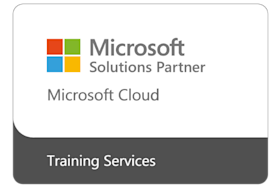Course subjects
Module 1: An Introduction to Power Apps
Let’s get started with an introduction to Microsoft Power Apps. Traditionally building customised solutions for a business involved using a coding language to build an application from scratch. Typically, these solutions could often only be used within the business, making external use of the application a large hurdle to overcome. With Power Apps we can now not only easily build solutions, but we can also share them with users in our business. Deployment takes seconds and you could by testing your own app on your phone in no time. This module will overview the features of Power Apps, its benefits to a business and the variety of ways you can build and access your apps on different devices.
Lessons
Lab: Introduction to Power Apps
Try the Cost Estimator App
Download and Review App Design
Sample App of your choice
Module 2: Getting Started with Power Apps
To begin our journey through the Power Apps product, we will begin by looking at some of the templates that are available to view and edit. Microsoft’s templates are a good starting point to discover what the product is capable off and how it can be achieved. We will also take the chance to have a tour of the editor so that students are familiar with the interface that they will be using over the two-day course. We will then build our first app from a static data source, showing students how to test their changes in the app instantly without the need to publish. We will also discuss how to configure your apps settings and how to access the app once it has been saved and shared.
Lessons
Discover Power Apps with templates
Building a new app with a data source
Add, edit and remove controls
Testing an app
App Settings
Publish and Share Apps
Mobile App
Lab: Getting Started
Module 3: Branding and Media
In our next module, we will look at the options available to designers that allow them to implement their business branding. Not only will this deal with the aesthetics of your app, it will also introduce time-saving tips to help keep your branding consistent. We will also be discussing how to embed media into your app which can be useful if you are planning on an app that might promote video content.
Lessons
Linking control properties
Backgrounds
Colours and transparency
Duplicating screens
Copying the look and feel
Using images
Embed and play audio and video
Lab: Branding and Media
Module 4: Power Apps Controls
So far in the course, we would have covered the basics of adding, editing and removing controls from our applications. The drive behind this module is to provide more depth on the categories of controls which can be used on a form. Your instructor will take you through each control and discuss its purpose and configuration. Tackling the wide selection of controls will help students recognise when to use the right control.
Lessons
Labels
Buttons
Text inputs
Controls
Galleries
Data tables
Forms
Media
Charts
Icons
Lab: Build Apps from Blank
Create an App from the blank template
Add Controls to collect and display data
Add Formulas to allow the controls to interact
Module 5: Data Sources and Logic
To help maintain and view essential business information, organisations often have a diverse selection of locations to keep different types of data. This could range from databases to file storage locations. Power Apps offers connections to a wide selection of data sources. We will show students to build their Power Apps to bring in data from a variety of sources as well as how they can utilise the common data source, a storage location unique to Power Apps.
Lessons
Lab: Data Source and Logic
SharePoint List connect to App
Power Automate to collect tweets to SharePoint
Display Tweets in Power Apps using the Twitter service
Create a reply screen in Power Apps
Module 6: Model-Driven Apps
Modules one to five discussed how to work with the original type of Power Apps known as a Canvas App, Microsoft have now introduced a second type of app known as a model-driven app. Model driven apps involve a different development process to canvas apps. We will review this development process during this module. Model-Driven apps can be quicker to build than canvas apps, but they are less customisable and typically have a higher cost, knowing which type of app to use is not always a simple decision, we will show you the pros and cons of each.
Lessons
What is a model-driven app?
Where will my data be stored?
How do create a model-driven app
Canvas vs model-driven summary
Lab: Model-Driven App
Module 7: Power Apps Integration
Power Apps is designed to easily connect to other business systems to read and update information. In this module we will discuss some simple ways to integrate Power Apps with key Microsoft 365 systems including Teams, SharePoint Online and Power Automate. The result, is the ability to use a combination of systems to create solutions for a variety of business requirements.
Lessons
Start a Flow from a PowerApp
Embed Power Apps in Teams
Embed Power Apps in SharePoint Online
Lab: Power Apps Integration
Module 8: Administration and Maintenance of Power Apps
In our last module for Power Apps, we will be looking at how a business can manage their existing apps. This could be using analytics to discover usage trends. We will discover how to export and import apps, so they can be reused in other locations. Finally, we will discuss how Microsoft 365 administrators can shape the Power Apps experience with high-level settings that help ensure data segregation and security.
Lessons
Lab: Administration and Maintenance

